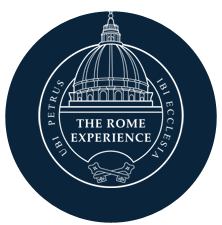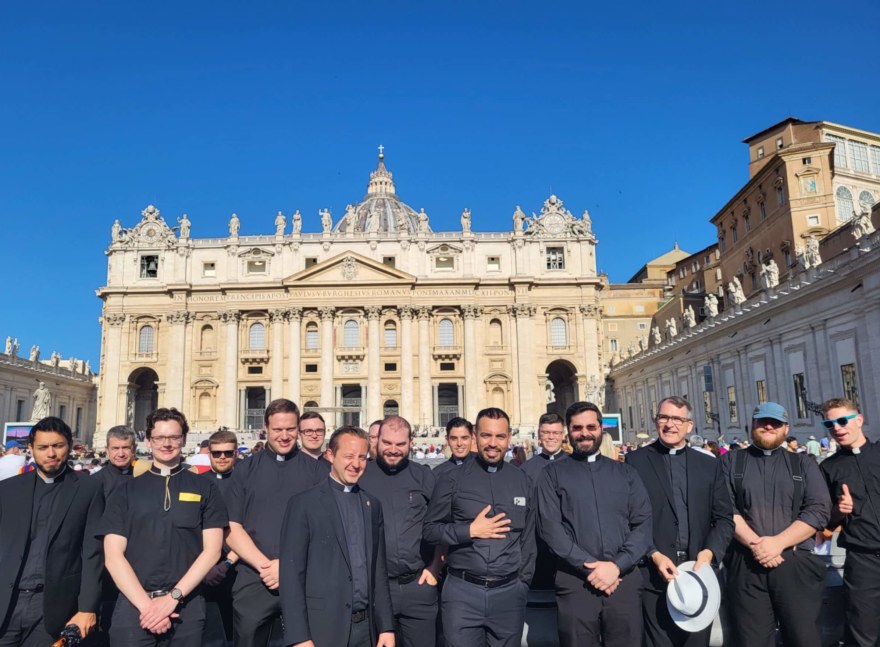Walking with Saints | Postcards Post-Rome 2023
Looking back over the last six weeks of travel, study, and prayer, Casey Cooney notes some moments that stood out:
Our First Course
The Rome Experience is in the first place a continuation and complement of the human, spiritual, pastoral, and intellectual formation we receive at our seminaries during the academic year. The intellectual component consists of a series of summer courses taken at the Pontifical University of the Holy Cross, which the Holy Father has entrusted to Opus Dei. Our first course focused on healthy masculine virtue as it is understood in the Christian tradition. The content of this course paired nicely with the topic of our 5-day retreat in Bracciano, where Fr. Eric noted that in order to be good priests, we must first become good Christians, and before good Christians, good men. We discussed practical ways to grow in masculine virtue through self-discipline, as it has been understood from Aristotle to St. Josemaria Escriva.
Papal Audience
On Wednesday, June 7th, we woke up a little earlier than usual to head to St. Peter’s square for an audience with the Holy Father. The audience began with Pope Francis riding through the square and greeting pilgrims, before offering a brief reflection on St. Therese of Lisieux, whose relics were on a tour of Rome. As the Holy Father noted, despite having spent much of her young life in a convent, St. Therese is considered a patron saint of missionaries due to the apostolic zeal for souls so apparent in her autobiography. She is model that regardless of our state in life, all Christians are called to be “missionaries” of divine love. Summaries of his reflection were repeated in 5 languages, and the audience concluded with a recitation of the Our Father in Latin and an apostolic blessing.
Scavi Tour
We were also afforded the unique opportunity to take a “scavi” tour below St. Peter’s Basilica. The basilica was originally commissioned by Constantine in 319 over an ancient cemetery that was believed to contain St. Peter’s tomb. In 1939, Pope Pius XII commissioned a series of excavations, or “scavi” in Italian, to determine whether this belief could be supported with archeological evidence. The researchers found a 1st century tomb located about 20 feet below the high altar which contained the remains of a powerfully built, 60-year-old man. Graffiti scratched into the tomb in 2nd century proclaims “Petros eni” – in Greek, “Peter is here.” In 1968, Pope St. Paul VI declared these to be the relics of St. Peter. This was one of my favorite moments of the trip. As our tour guide noted, these 20 feet between Peter’s remains and the high altar compose the entire history of our Church – the first pope and the last (or most recent). This also reminds us that our faith and our traditions are credible. The deeds and suffering of Christ and His Apostles are not myth but history.
Clementine Chapel
As I mentioned, about 20 feet separate the base of the high altar in St. Peter’s Basilica from the remains of St. Peter. Directly underneath the high altar is an older altar, consecrated in 1123. Below this altar is a marble slab with a purple porphyry stripe, placed by Constantine in the 4th century, when he built the original St. Peter’s Basilica. On the east side of this slab, slightly below the ground level of Constantinian basilica, lies a chapel completed by Pope Gregory the Great in 6th century. After renovations by Clement VIII in the 16th century, it was called the “Clementine Chapel.” It is the only space remaining from the ancient basilica. The chapel can only contain 9 people at a time, but the altar is about 5 or six feet above the remains of St. Peter: it is therefore both the oldest altar and the most proximate to the Prince of the Apostles. Celebrating Mass here is a rare privilege. For those who participated, it was an opportunity to pray for the strength to “confirm the brethren” in the spirit of St. Peter, and to embrace any suffering for the sake of Christ.
7 Churches Pilgrimage
St. Philip Neri began a tradition of hiking to 7 ancient churches in one day, in a spirit of prayer and recollection. Fr. Eric recreated this pilgrimage with the men of The Rome Experience. This 18-mile hike includes the four major basilicas of Rome (St. Peter’s, St. Mary Major, St. John Lateran, and St. Paul’s Outside the Walls) as well as 3 other ancient churches (St. Lawrence Outside the Walls, Santa Croce in Gerusalemme, and San Sebastian). It is not an exaggeration to propose that these are the 7 most important churches in Rome, containing some of the most precious relics of our faith, including the relics of Peter and Paul, the crib of Our Lord, and various items associated with His crucifixion, such as the wood of the cross, nails, and thorns. We finished the tour at St. Paul’s Outside the Walls, where the Cardinal Protector of the Basilica, James Cardinal Harvey, treated us to gelato (a welcome treat after an 18-mile hike in black clerics). It was a tremendous privilege to pray at these holy places and to have a conversation with Cardinal Harvey, a Wisconsin native and Christian gentleman of the highest order. Many of us had never met a Cardinal before, and it was inspiring to see that a man in such a prominent position is eminently a servant of Christ and His Church.
Casey Cooney
Diocese of Madison


